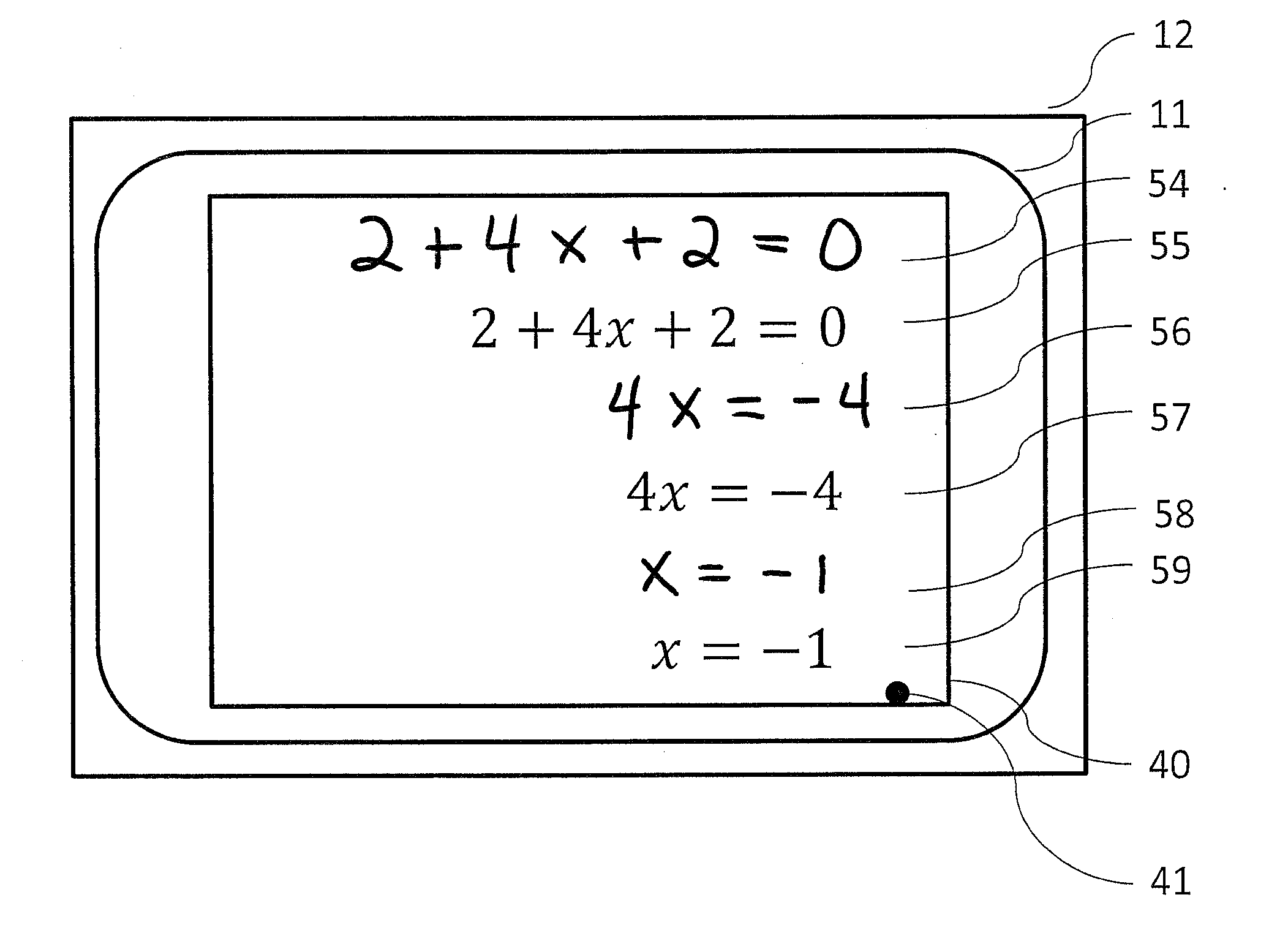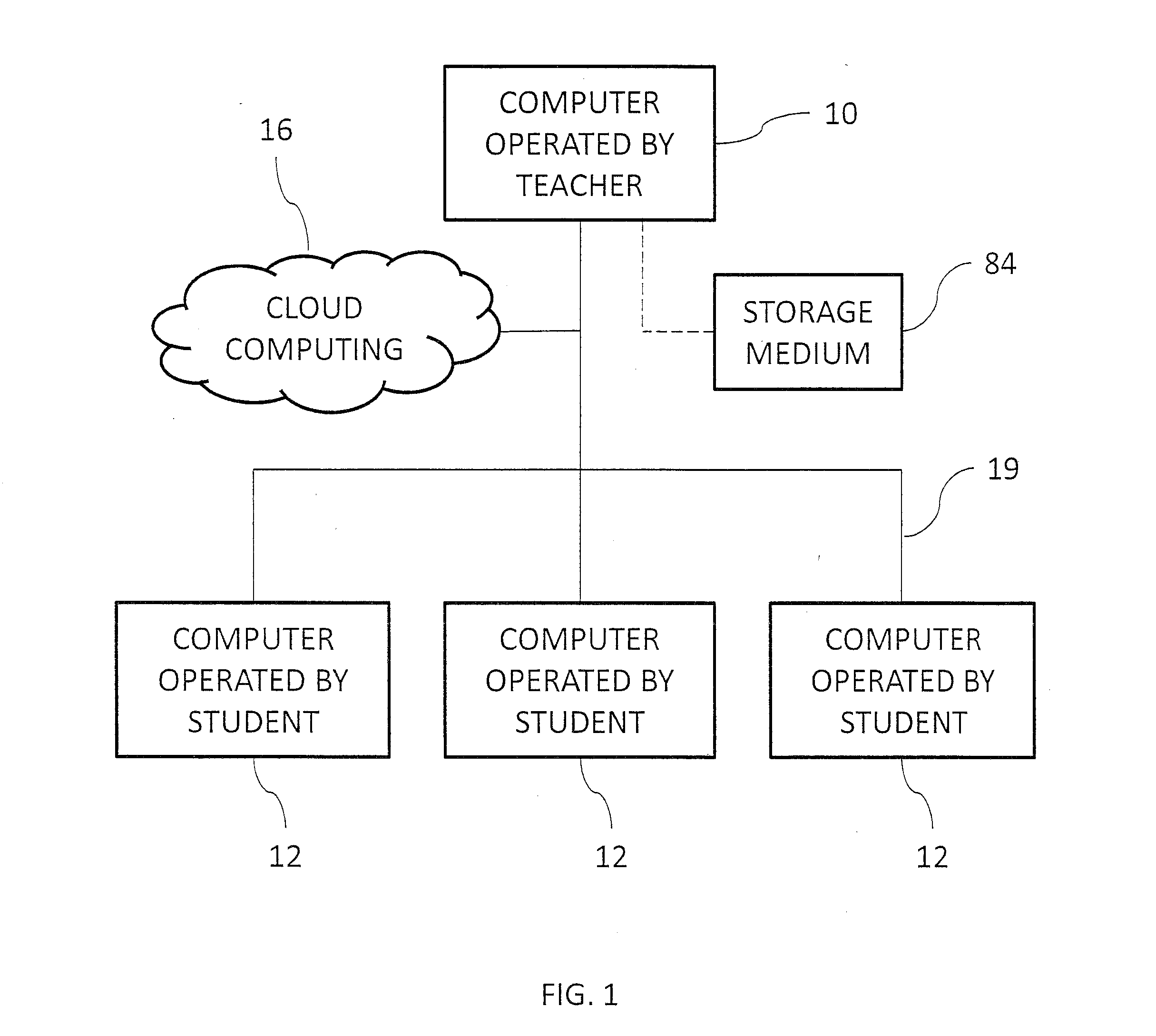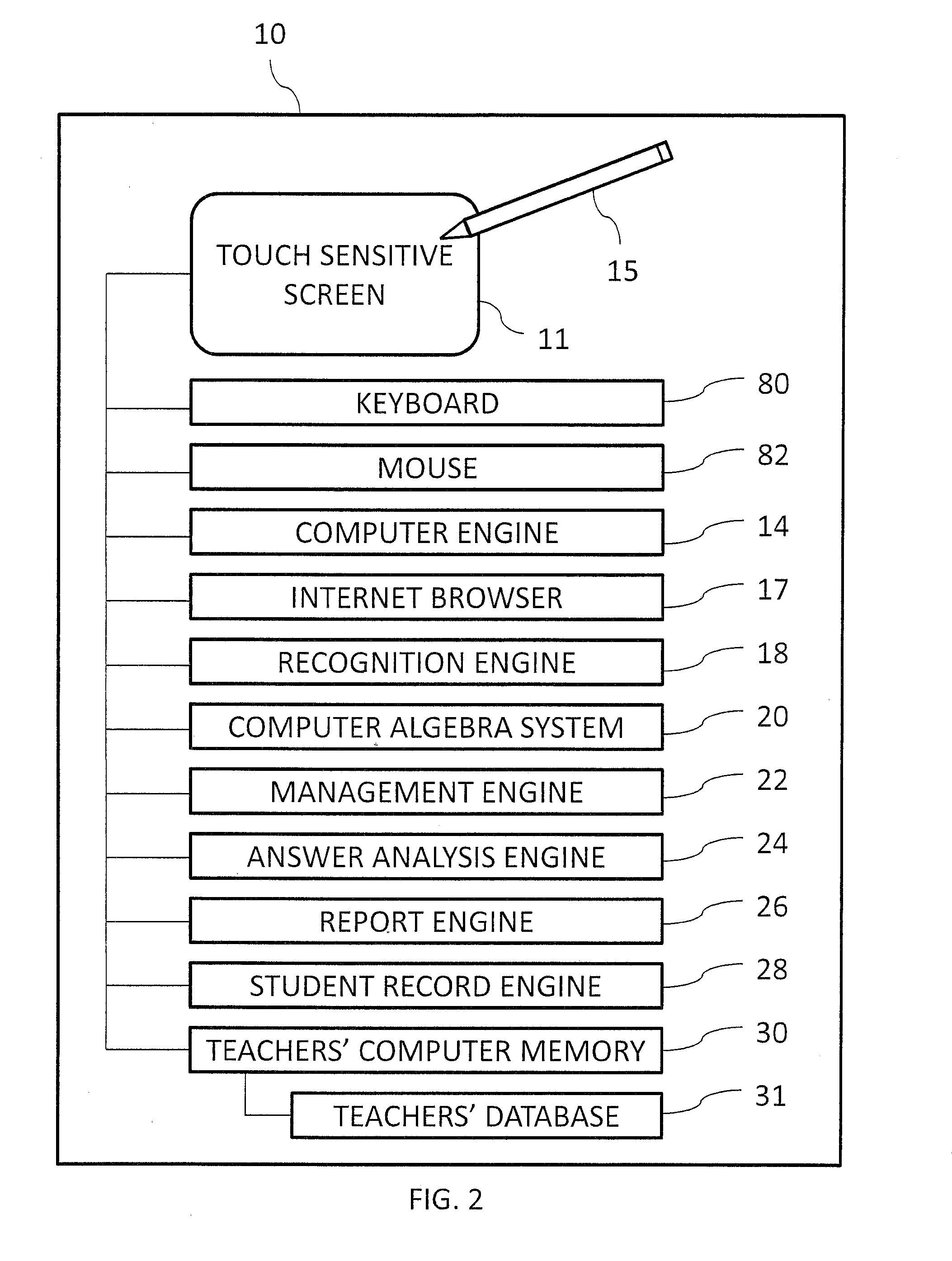Computerized system and method for teaching, learning, and assessing step by step solutions to stem problems
a computerized system and problem solving technology, applied in the field of teaching tools for the teaching, learning and assessing of student understanding of science, technology, engineering and mathematics (stem) subjects, can solve problems such as more difficult and time-consuming, change interrupts the teaching flow, and distracts students, and achieves rapid evaluation of each step
- Summary
- Abstract
- Description
- Claims
- Application Information
AI Technical Summary
Benefits of technology
Problems solved by technology
Method used
Image
Examples
Embodiment Construction
[0061]Teaching STEM subjects requires that students learn and understand abstract concepts. Teachers often use example problems and hand sketches to describe these concepts. Educators have found that it is advantageous to use teaching tools with touch sensitive screens in combination with software applications which optimize the didactic features of these tools thereby enabling teachers to enter standard math notation and hand-sketched diagrams onto the touch sensitive screens while having their input viewed by all students in the class. Furthermore, it is well known in education that students gain a better understanding of solutions to STEM problems if the solutions are presented with visual reinforcement. STEM problem solutions are generally presented by teachers as a series of steps written in mathematical notation.
[0062]In today's emerging classroom settings, STEM example problems and their step by step solutions are being presented to students by teachers using any one, or comb...
PUM
 Login to View More
Login to View More Abstract
Description
Claims
Application Information
 Login to View More
Login to View More - R&D
- Intellectual Property
- Life Sciences
- Materials
- Tech Scout
- Unparalleled Data Quality
- Higher Quality Content
- 60% Fewer Hallucinations
Browse by: Latest US Patents, China's latest patents, Technical Efficacy Thesaurus, Application Domain, Technology Topic, Popular Technical Reports.
© 2025 PatSnap. All rights reserved.Legal|Privacy policy|Modern Slavery Act Transparency Statement|Sitemap|About US| Contact US: help@patsnap.com



